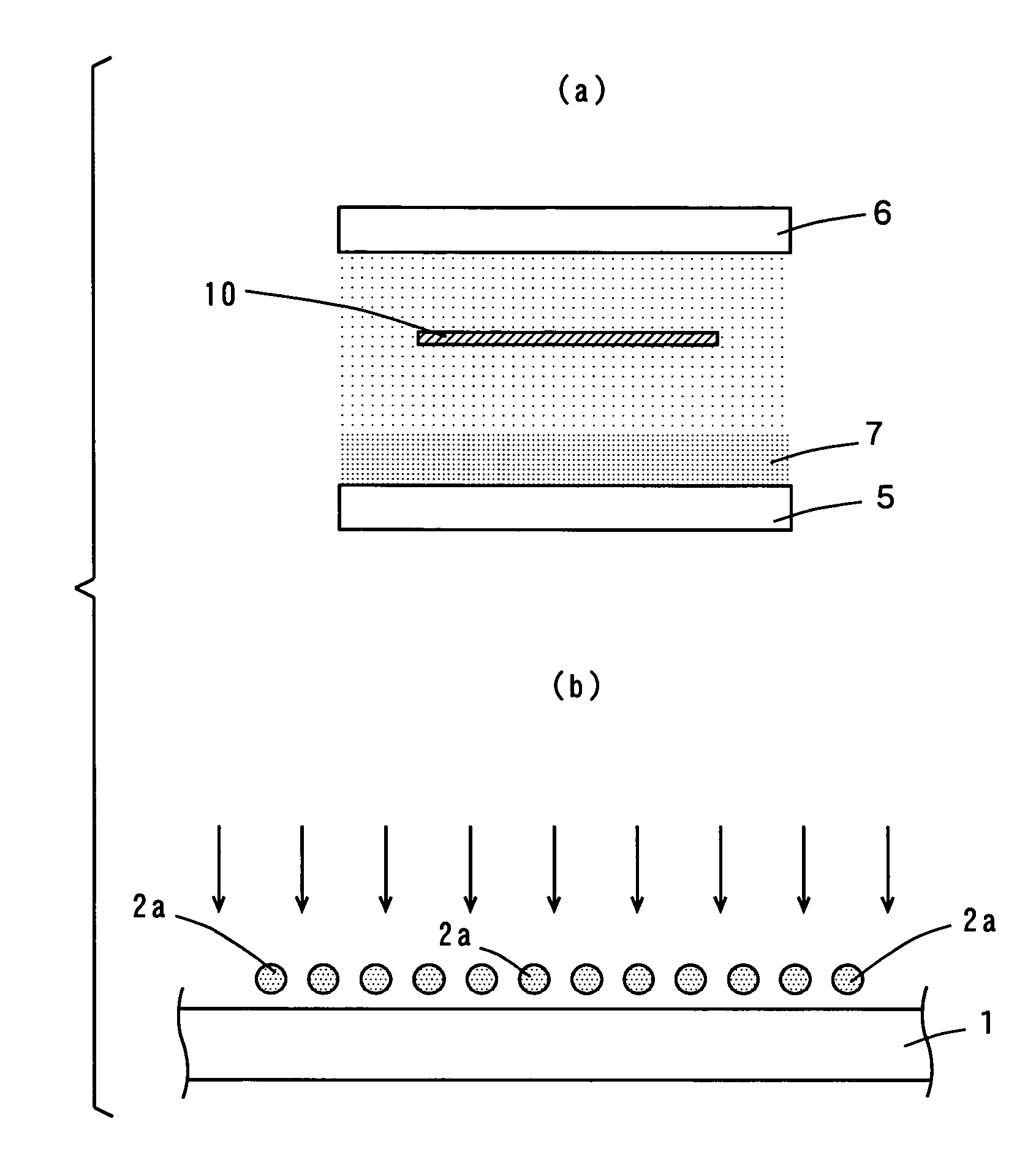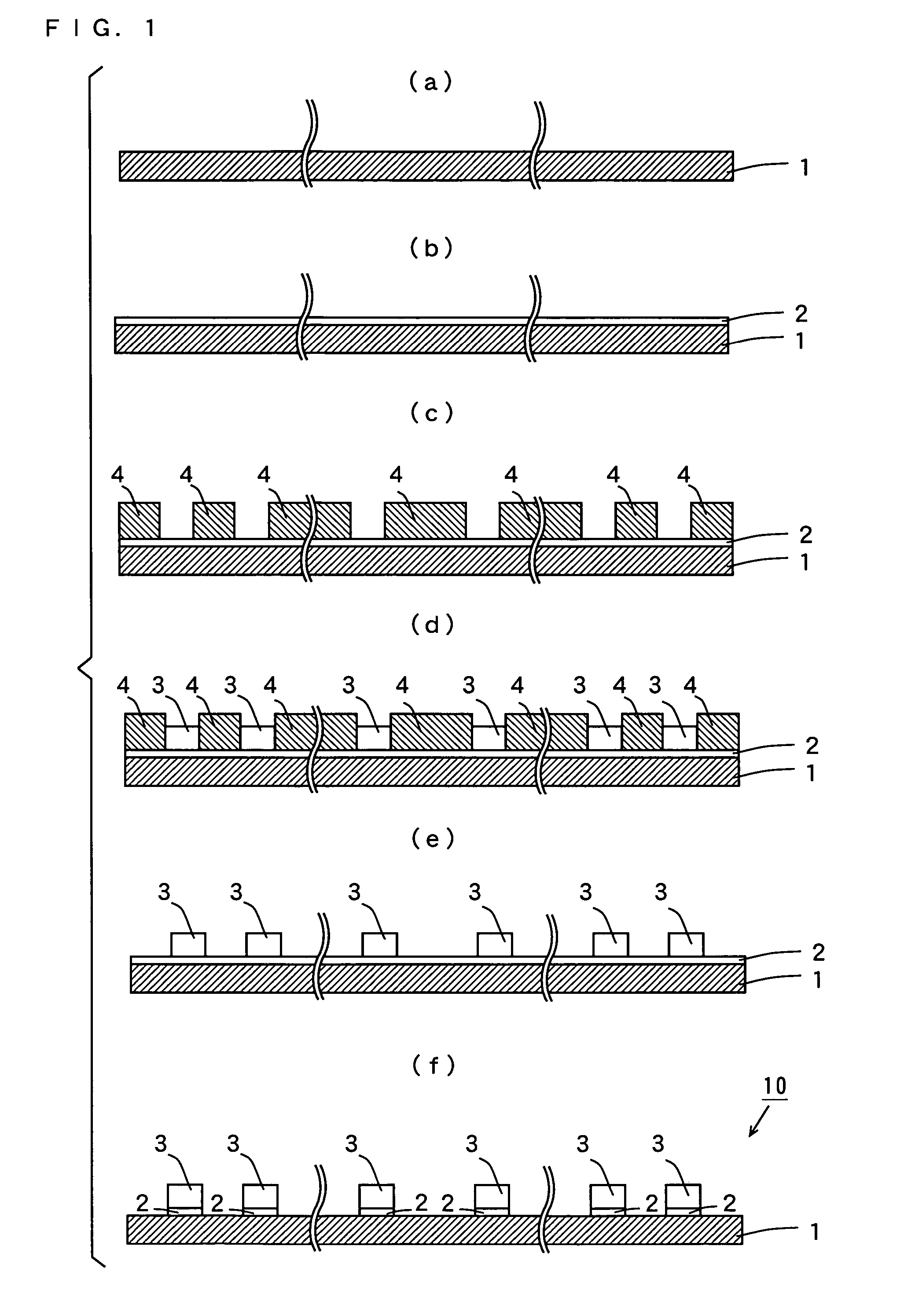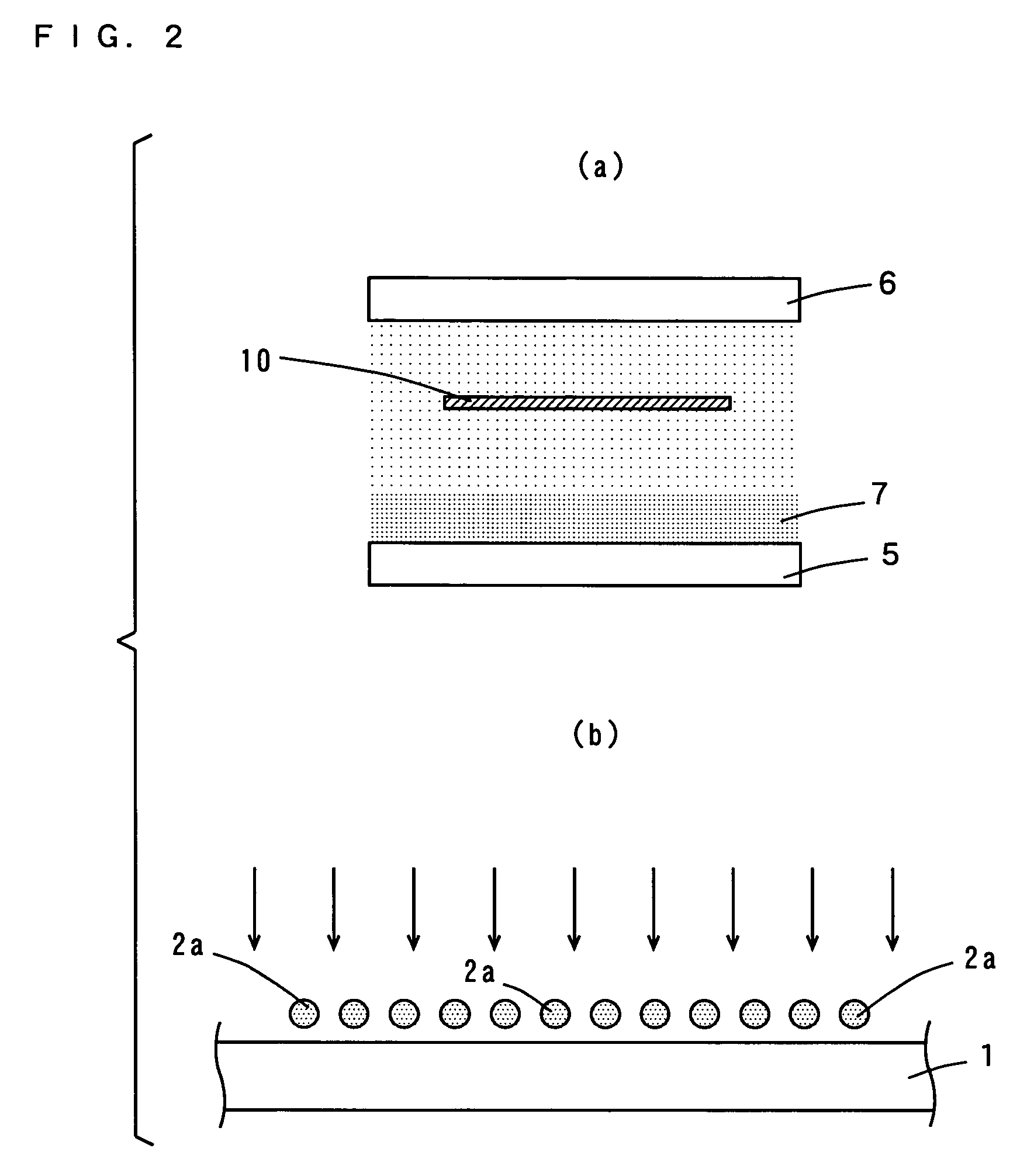Method of manufacturing printed circuit board
a manufacturing method and printed circuit board technology, applied in the direction of printed circuit manufacturing, cable/conductor manufacturing, printed circuit aspects, etc., can solve the problems of insufficient removal of residual metal, short circuit between conductive patterns,
- Summary
- Abstract
- Description
- Claims
- Application Information
AI Technical Summary
Benefits of technology
Problems solved by technology
Method used
Image
Examples
first embodiment
[0030]As the method of manufacturing the printed circuit board, a general semi-additive method is employed.
[0031]FIG. 1 is a schematic sectional view showing the steps in an example of the method of manufacturing a printed circuit board according to the semi-additive method.
[0032]As shown in FIG. 1(a), an insulating layer 1 of a polyimide film having a thickness of for example 25 μm is prepared.
[0033]Then, as shown in FIG. 1(b), a thin metal film 2 is formed by sputtering or electroless plating on the insulating layer 1. Note that the thin metal film 2 has a layered structure including a layer of nickel (Ni)-chromium (Cr) having a thickness of for example 40 nm and a layer of copper (Cu) having a thickness of for example 100 nm.
[0034]Now, as shown in FIG. 1(c), using dry film resist or the like, plating resist 4 in patterns reversed from conductive patterns (that will be described in connection with subsequent steps) is formed on the thin metal film 2.
[0035]Then, as shown in FIG. 1(...
second embodiment
[0051]FIG. 3 is a schematic view of another example of how the printed circuit board 10 is processed by plasma etching.
[0052]As shown in FIG. 3, the printed circuit board 10 is provided for example on the earth electrode 6 provided in the plasma etching device. Note that if the AC electrode 5 contacts the printed circuit board 10, the printed circuit board 10 is damaged, and therefore the distance between the printed circuit board 10 and the AC electrode 5 is preferably not less than 1 mm.
[0053]The frequency of the AC power supply is preferably not more than 1 GHz. The pressure in the device is preferably atmospheric pressure (1.0×105 Pa). The processing power is preferably from 500 W to 2000 W. The processing time is preferably from 10 seconds to 2 minutes.
[0054]The inter-electrode distance between the AC electrode 5 and the earth electrode 6 is preferably not more than 10 mm, more preferably from 1 mm to 5 mm. In this way, plasma discharge is carried out in a stable manner.
[0055]T...
third embodiment
[0059]FIG. 4 is a schematic view of yet another example of how the printed circuit board 10 is processed by plasma etching.
[0060]As shown in FIG. 4, the printed circuit board 10 is provided for example in a chamber 8 in a magnetron type plasma etching device. Note that in FIG. 4, the printed circuit board 10 is placed about in the center of the chamber 8, but it may be placed in any position inside the chamber 8.
[0061]The frequency of the AC power supply is preferably not less than 1 GHz. The pressure in the chamber 8 is preferably from 1.33×10−2 Pa to 1.33×102 Pa. The processing power is preferably from 400 W to 1000 W. The processing time is preferably from 20 seconds to 2 minutes.
[0062]The gas for the plasma etching is the same as that of the first embodiment.
[0063]According to the embodiment, plasma etching is carried out in the chamber 8 in the magnetron type plasma etching device, so that the sheath layer 7 does not form. In this way, isotropic etching is enabled.
[0064]As desc...
PUM
| Property | Measurement | Unit |
|---|---|---|
| thickness | aaaaa | aaaaa |
| thickness | aaaaa | aaaaa |
| pressure | aaaaa | aaaaa |
Abstract
Description
Claims
Application Information
 Login to View More
Login to View More - R&D
- Intellectual Property
- Life Sciences
- Materials
- Tech Scout
- Unparalleled Data Quality
- Higher Quality Content
- 60% Fewer Hallucinations
Browse by: Latest US Patents, China's latest patents, Technical Efficacy Thesaurus, Application Domain, Technology Topic, Popular Technical Reports.
© 2025 PatSnap. All rights reserved.Legal|Privacy policy|Modern Slavery Act Transparency Statement|Sitemap|About US| Contact US: help@patsnap.com



